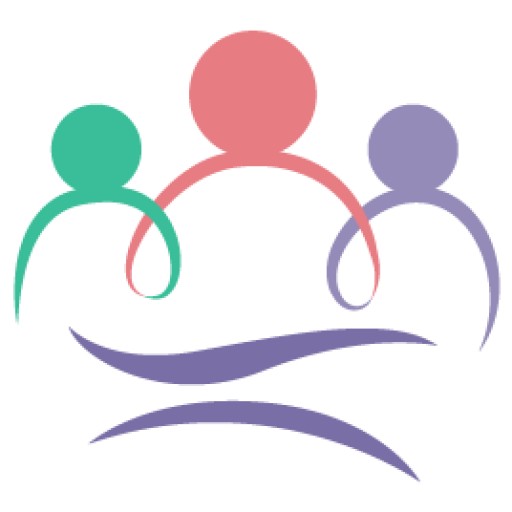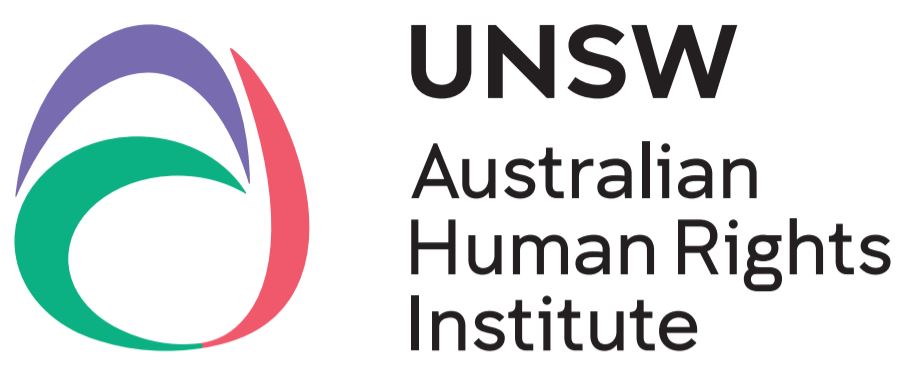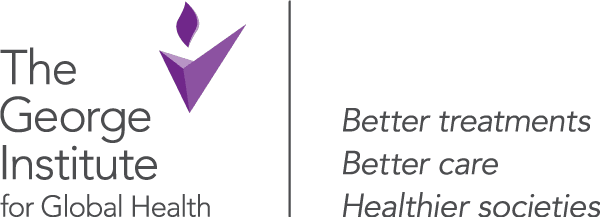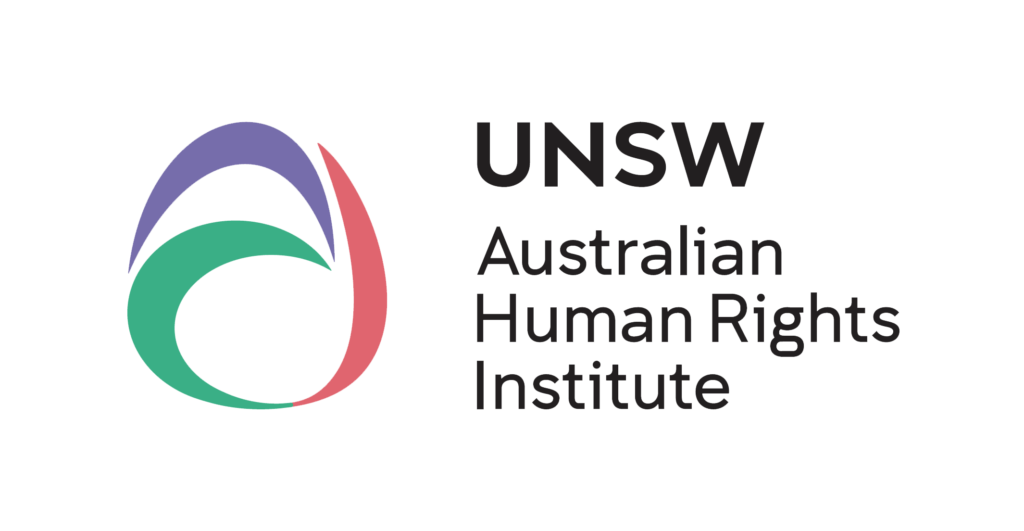Terms and definitions for 'Sex & Gender Policies in Health and Medical Research'.
Project Glossary
What is the document for?
The Sex and Gender Policies in Medical Research Project Team and Advisory Committee recognise that language and terminology in this field is important. We also recognise that language, terminology and concepts are not static, and therefore this document will remain live over the lifetime of this project to reflect this. This document and the terminology outlined primarily reflect an Australian context.
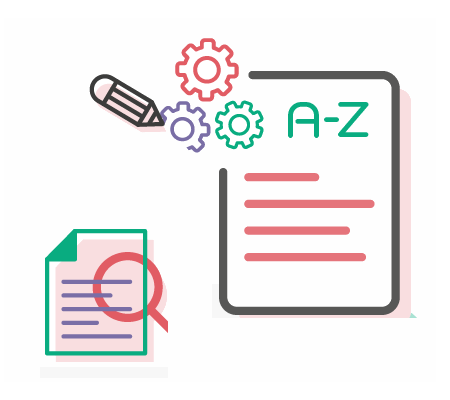
Terms & definitions
Aboriginal:(1)
Aboriginal people are the original inhabitants of mainland Australia and represent many different clan groups or ‘nations’, each with distinct cultures, beliefs and languages. The lowercase word ‘aboriginal’ refers to an Indigenous person from any part of the world and does not necessarily refer to an Aboriginal Australian. The use of the word ‘Aboriginal’ as a stand-alone descriptive noun should not be used to include Torres Strait Islander people, but it is acceptable to use it as an attributive adjective, such as in the ‘Aboriginal Education Unit’.
Further notes:
- Never use the term ‘Aborigine’. This is an outdated term that features in the legislation, policies and practices of colonisation and assimilation. It is associated with the pain and suffering experienced by generations of Aboriginal peoples.
- Aboriginal must always be capitalised.
- Aboriginal must never be abbreviated. Abbreviations have historically been used as racist slurs.
- ‘Aboriginals’ is grammatically incorrect and should never be used in any context.
- Aboriginal must be used as an adjective, not as a noun. For example, ‘she is an Aboriginal person’, ‘she is Aboriginal’ but NOT ‘She is an Aboriginal’.
Aboriginal health:(1)
Aboriginal health refers to not just the physical well-being of an individual but also the social, emotional, cultural and spiritual well-being of the whole community in which individuals are able to achieve their full potential, thereby bringing about the total well-being of their community. It is a holistic definition of health. Social and Emotional Wellbeing (often referred to as SEWB) is part of understanding the Aboriginal holistic definition of health and recognises an Aboriginal person’s connections to Country, community, culture, kinship, spirituality, as well as their physical and mental health, as contributing to wellbeing.
Aboriginal and Torres Strait Islander peoples:(1)
A collective term for referring to Aboriginal and Torres Strait Islander peoples.
It is best to ask communities that you are working with what their preferred terms are regarding cultural terminology. Aboriginal and Torres Strait Islander people may prefer to be known by the terms from their own languages, for example, Koori for the Sydney area and parts of Victoria or Murri for northern and far western parts of NSW and Queensland (note that the spelling of these names may vary). Often Aboriginal and Torres Strait Islander peoples will also identify themselves in the context of their Country, for example, ‘I am a Bundjalung woman/man’. The traditional custodians of our Australia office are called the Gadigal people of the Eora Nation.
The term ‘peoples’ is used to recognise the many Aboriginal and Torres Strait Islander groups in Australia. For example, ‘The report will provide new insights into the nutritional health of Aboriginal and Torres Strait Islander peoples’ is correct usage. For informal mentions where you need to use the collective singular form – more general descriptions – ‘Aboriginal and Torres Strait Islander people’ is acceptable. For example, ‘the Institute is encouraging more Aboriginal and Torres Strait Islander people to apply for roles’ is correct usage.
Further notes:
- ‘Aboriginal’ and ‘Torres Strait Islander’ when referring to descendants of the original inhabitants of Australia should always be spelt with capitals.
- Never abbreviate Aboriginal and Torres Strait Islander to ‘ATSI’. Using ‘ATSI’ might save space however is seen as offensive and homogenises two distinct cultures into one group. Acronyms are only acceptable if they appear in the name of an entity or organisation, e.g., Aboriginal and Torres Strait Islander Commission = ATSIC, Australian Institute of Aboriginal and Torres Strait Islander Studies = AIATSIS.
- Avoid the use of pronouns such as ‘the’, ‘they’, ‘them’, ‘their’, and ‘those’ to replace Aboriginal and Torres Strait Islander (e.g., discussing Aboriginal and Torres Strait Islander people as a collective). The use of pronouns in this way is degrading and promotes social distance between the author and Aboriginal peoples.
- There is no singular identity or experience of an Aboriginal and/or Torres Strait Islander person. Many hold the idea that only ‘real’ or ‘traditional’ Aboriginal people live in Arnhem Land or the Central Desert. This is offensive and denies the identity of Aboriginal and Torres Strait Islander people in other contexts and with other histories. In fact, most Aboriginal and Torres Strait Islander people live in city and regional areas.
Cisgender:(2)
A term used to describe people who identify their gender as the same as what was presumed for them at birth (male or female). ‘Cis’ is a Latin term meaning ‘on the same side as’. Cis is an appropriate shorthand for cisgender. Cis man or cis woman, rather than ‘cisman’ or ‘ciswoman’.
Cisnormativity:(2)
The assumption that everyone is cisgender. This may result in misgendering including using the wrong pronouns, or designing services, products, or campaigns that assume everyone is cis.
Cisgenderism:(2)
Where something is based on a discriminatory social or structural view that positions (either intentionally or otherwise) the trans experience as either not existing or as something to be pathologised. Cisgenderism believes that gender identity is determined at birth and is a fixed and innate identity that is based on sex characteristics (or ‘biology’) and that only binary (male or female) identities are valid and real.
Endosex:(3)
A word used to describe people who are not intersex. This is a relatively new term, developed in response to flawed attempts to frame intersex people as necessarily non-cis/het (i.e. non cisgender, non heterosexual).
Gender:(2,4–6)
Refers to the way in which a person identifies or expresses themselves, including behaviour, attitudes, appearance, and habits. A person’s gender identity or gender expression is not always binary (man or woman; see non-binary), and may change over time. Gender is distinct from sex. Gender attitudes and behaviours are complex and change across time and place, and gender should be understood in relation to other social categories (see intersectionality). Gender also encompasses gender norms and gender relations.
Gender affirmation (also known as gender transition):(2)
The personal process or processes a trans or gender diverse person determines is right for them in order to live as their defined gender and so that society recognises this. Gender affirmation may involve social, medical and/or legal steps that affirm a person’s gender. Affirming gender does not mean changing gender, ‘having a sex change’ or ‘becoming a man or a woman’, and transition is not the same as being trans. A trans or gender diverse person who has not medically or legally affirmed their gender is no less the man, woman or non-binary person they have always been.
Gender expression:(4)
Refers to the way in which a person externally expresses their gender or how they are perceived by others.
Gender identity:(4,7)
Refers to a person’s deeply held internal and individual feeling of gender.
Gender norms:(6,7)
Refers to spoken and unspoken rules in the family, workplace, institution or global culture that influence individuals.
Gender relations:(7)
Refers to power relations between individuals with different gender roles and identities.
Indigenous:(1)
There is no universally accepted definition for Indigenous peoples. As ‘Indigenous’ is not specific, some Aboriginal and Torres Strait Islander people feel the term diminishes identity as it does not reflect the unique and diverse cultures of Aboriginal and Torres Strait Islander peoples. For this reason, at The George Institute we use ‘Aboriginal and Torres Strait Islander’ or ‘First Peoples’ as the preferred terminology. Note that you may see the term Indigenous with a capital ‘I’ used when referring to Aboriginal and Torres Strait Islander people collectively featured within program and position titles across government, higher education and community services.
The lowercase word ‘indigenous’ is used when referring to First Peoples of any region or country. The World Health Organisation uses ‘indigenous’ with a lowercase ‘i’ when referring to First Peoples in the international context. Indigenous peoples globally have their own terminology which should be used such as the Maori who are First Nations people from New Zealand. The United Nations Permanent Forum on indigenous Issues estimates that there are more than 370 million indigenous peoples in 70 countries worldwide.
Intersectionality:(8,9)
An analytical framework for understanding how multiple social and political identities (including but not limited to gender, caste, sex, race, ethnicity, sexuality, religion, disability, physical appearance, etc) may produce different forms of advantages and disadvantages for individuals across social systems, including in health and medical research.
With origins in African American feminist legal scholarship, and coined by the scholar Kimberlé Crenshaw, intersectionality is concerned with understanding the specific experiences of those whose lives are impacted by more than one system of oppression. In Crenshaw’s original use, this amounted to understanding how in legal systems, Black women are both Black and women, but because they are Black women, they endure specific forms of discrimination that Black men, or white women, might not. Intersectionality has travelled beyond its original usage to describe Black women’s treatment in legal systems to include multiple axes of identities.
Intersex:(3,5)
Refers to people who are born with sex characteristics that do not fit medical norms for female or male bodies, including a diverse range of genetic, chromosomal, anatomic, and hormonal variations. The terms intersex, intersex people, intersex variation, and intersex trait are preferred, as these terms recognise intersex variations as naturally occurring biological phenomena. The phrase ‘people born with intersex variations’ is useful as it recognises the diversity of intersex people. At least 40 different variations, with different characteristics, are so far known to science.
These terms should not be used: ‘intersex condition’, ‘hermaphrodite’, ‘intersexual’, ‘intersexuality’, ‘intersexed’, ‘inter-sex’, and the abbreviation ‘IS’. Some intersex people may use ‘intersex condition’ or ‘hermaphrodite’ for themselves (as a way of claiming back these pathologised terms), but outside of honouring someone’s own self-definition, these terms should not be used.
Intersex Human Rights Australia also reject a number of terms used in medical discourse. The terms ‘disorder’, ‘DSD’, or ‘Disorders of Sex Development’ are rejected as pathologising and stigmatising language that harms intersex people. ‘Differences of Sex Development’ and similar terms are to be avoided because they will be interpreted as indistinguishable from DSD but may be necessary in some clinical settings as they may be more familiar to individuals.
Misconceptions about intersex are widespread, including assumptions that to be intersex is to not be female or male (as described in the original project proposal). Intersex people should not be assumed to be a third sex. These misconceptions have an adverse impact on how people understand the term.
First Nations/Peoples:(1)
Some international terms such as ‘First Nations’ and ‘First Peoples’ are becoming more widely used in Australia and can be used to recognise Aboriginal and Torres Strait Islander people as the sovereign people of this land as separate and unique sovereign nations. The term ‘First Nations’ is common within the Canadian context however is increasingly used in Australian discourse.
LGBTIQ+:(10)
UNSW uses this acronym as an umbrella term to describe lesbian, gay, bisexual, transgender, intersex, and queer-identifying people, and the ‘+’ being an inclusive and intentional way of representing all identities and experiences that are not represented by the letters. Other variations of the acronym exist, which might place the letters in a different order, or include other letters. ‘A’ is sometimes included, which typically refers to asexual. Australian Government agencies use both LGBTI and LGBTIQ+. Also see SOGIESC
It should be noted that Intersex Human Rights Australia,(3) Intersex Peer Support Australia and the National LGBTI Health Alliance recommend the use of language specific to each particular situation, understanding of which populations are included or not included, in preference to a standard house term that can obscure the included populations. See IHRA’s Raising the Bar: How to be an intersex ally and the Darlington Statement.
Medical research pipeline:(11)
Refers to the following ‘pipeline’ of research, based on clinical trials:
Preclinical research – involves testing in cell cultures or animal models for preliminary efficacy and toxicity information before conducting trials in humans
Phase I – Trials to test a new biomedical intervention for the first time in a small group of people (<100) to evaluate safety
Phase II – Trials to study an intervention in a larger group of people (several hundred) to determine efficacy and to further evaluate its safety
Phase III – Trials to study the efficacy of an intervention in large groups of trial participants (from several hundred to several thousand) by comparing the intervention to other standard or experimental interventions. Also monitor adverse effects and to collect information that will allow the intervention to be used safely.
Phase IV – Studies done after an intervention has been marketed, designed to monitor the effectiveness of an approved intervention in the general population and to collect information about any adverse effects associated with widespread use over longer periods of time. May also be used to investigate the potential use of the intervention in a different condition, or in combination with other therapies.
Medical research sector:(12)
Many groups in Australia form the medical research sector, encompassing many disciplines, across the research pipeline. For this project we have defined the major groups within the medical research sector as – 1) Funders (government, industry or philanthropic), 2) Researchers (in universities, independent medical research institutes, industry and not for profits, including those involved in training researchers), 3) Publishers, 4) Groups who use and synthesise research to develop clinical or public health recommendations; or provide advice on how to do this (in government, clinical, industry or not for profit settings), 5) Societies and advocacy groups (including medical colleges)
Non-binary:(2)
An umbrella term for any number of gender identities that sit within, outside of, across or between the spectrum of the male and female binary. A non-binary person might identify as genderqueer, gender fluid, trans masculine, trans feminine, agender, bigender, etc. Non-binary people are part of the spectrum of trans and gender diverse people.
Inventory of sex characteristics:(13)
A catalogue of organs that are relevant for the provision of health care or collection of data. Given that a person’s sex organs cannot be assumed based on appearance, or indeed by sex, cataloguing a person’s sex organs may be more relevant in many clinical settings. An inventory of sex characteristics might include asking if a person has a penis, testes, prostate, breasts, vagina, cervix, uterus, ovaries, as well as organ options that may be specific to intersex people (e.g. ovotestes, streak gonads). An inventory of sex characteristics may also be called an ‘organ inventory’.
Note that this information is sensitive and may not be fully known by an individual. For example, intersex persons with atypical anatomy or gonads may have been subjected to medical interventions to remove or modify those characteristics without their personal consent or knowledge, and may only have partial information about their bodies.
Presumed or observed at birth:(2,14)
The sex/gender one is presumed at birth is what the doctor says you are when they see you after being born. This term is used rather than ‘assigned at birth’ or similar terms because those genders are a presumption made about everyone, even if many of those people grow up to have that gender fit them just fine.
Pronouns:(15)
Pronouns refer to a person or other entity other than the speaker or listener. Common pronouns include ‘he’, ‘she’, and ‘they’, but also other neopronouns such as ‘ze’, ‘xe’, ‘hir’, ‘fae’, ‘per’, ‘ve’, ‘ey’, and ‘hen’, among others. Using a person’s pronouns, if known to you, is a basic way of respecting someone’s gender identity. Building on an ongoing commitment to bias-free language, the 7th edition of APA referencing style recommends the use of singular ‘they’ when referring to someone whose pronouns are not known to you, referring to a person in the abstract when gender is not relevant, and instead of ‘he/she’, ‘his/her’, etc. Some people use pronouns interchangeably, and others use no pronouns at all, preferring the use of their name only. You cannot know what someone’s pronouns are by looking at them.
Minus18 has produced a useful browser resource to practice using different pronouns, including singular ‘they’.
Sex:(5,14)
Sex for humans is a legal status, classified as either male or female in most jurisdictions, and which is typically presumed or observed at birth based on external sex characteristics. While typically based these sex characteristics, a person’s sex can change over the course of their lifetime and may differ from their sex recorded at birth.
Sex and gender policies:
For the scope of this project this refers to polices for the collection, analysis and/or reporting of sex and gender data in medical research. It does not refer to policies and practices for the collection or reporting of sex and gender data in the context of clinical care delivery.
Sex characteristics:(2,3)
Physical parts of the body that are related to body development/regulation and reproductive systems. Primary sex characteristics are gonads, chromosomes, genitals and hormones. Secondary sex characteristics emerge at puberty and can include the development of breast tissue, voice pitch, facial and pubic hair etc. The term ‘sex characteristics’ is more accurate than ‘biological sex’, ‘biologically male’ or ‘biologically female’. Physical organs and chromosomes are frequently gendered as male or female (e.g., ‘male hormones’, ‘female organs’) and this gendering of body parts is a significant source of stigma, discrimination and pathologisation. See also: inventory of sex characteristics.
Sistergirl/Brotherboy:(16)
Aboriginal and Torres Strait Islander peoples who are trans might use the term Sistergirl and Brotherboy. Sistergirls and Brotherboys have distinct cultural identities and roles. Sistergirl is a term used by Aboriginal and Torres Strait Islander peoples to describe gender diverse people that have a female spirit and take on female roles within the community. Brotherboy is a term used by Aboriginal and Torres Strait Islander peoples to describe gender diverse people that have a male spirit and take on male roles within the community. These terms may not specifically define who someone is, but might complement identity. Sistergirls and Brotherboys might be non-binary, female or male. Sistergirl and Brotherboy are terms specific to Aboriginal and Torres Strait Islander peoples, and it should be noted that culturally specific gender identities beyond a Western binary exist across First Nations cultures around the globe.
It should also be noted that in broader Aboriginal and Torres Strait Islander communities, the terms ‘Sistagirl’ and ‘Brothaboy’ are used as terms of endearment, for women and men respectively, with no reference to gender diversity.
It should be noted that sex and gender terminology for Aboriginal and Torres Strait Islander peoples and other First Nations peoples can be lost or decontextualised in cultural and linguistic translation. Indigenous sexualities predate modern frameworks or understandings of sex and gender. Indigenous queer movements have centred decolonial resistance of control and violence over First Nations bodies and lands that has occurred through colonisation and should therefore be understood within this contextual framework. See this essay, Indigenous Sexualities: Resisting Conquest and Translation.
SOGIESC:(4)
An acronym used to describe sexual orientation, gender identity and expression, and sex characteristics collectively for the purposes of law and policy, most often in human rights and anti-discrimination law. SOGII (sexual orientation, gender identity, intersex) was previously used. LGBTI and other variants are more often used in Australian communities.
Torres Strait Islander:(1)
Torres Strait Islander people are descendants from one of the Torres Strait Islands located to the northern tip of mainland Queensland. It is important to acknowledge that First Peoples of the Torres Strait Islands have a separate linguistic and cultural identity to Aboriginal people. Many Torres Strait Islander people today live outside of the Torres Strait.
Further notes:
- Torres Strait Islander must always be capitalised.
- Abbreviations such as ‘Islander’ or ‘TSI’ should not be used.
Trans and gender diverse:(2)
These are inclusive umbrella terms that describe people whose gender is different to what was presumed for them at birth (see presumed or observed at birth). The term ‘trans’ is sometimes used to capture both transgender and gender diverse people, although documents should specify this with first usage, and recognise that this will not be an appropriate shorthand term to use in every context. Trans man or trans woman, rather than ‘transman’ or ‘transwoman’.
Trans people may position ‘being trans’ as a history or experience, rather than an identity, and consider their gender identity as simply being female, male or a non-binary identity. Some trans people connect strongly with their trans experience, whereas others do not. Processes of gender affirmation may or may not be part of a trans or gender diverse person’s life.
It should be noted that the legal processes required to change gender identity markers on government documentations vary across Australian jurisdictions. Institutions also differ in the ways they collect data about gender, and there are inconsistencies in how trans people may be recognised in research, human resources, and medical administration systems.
Note – see the Transhub entry for more information on the term ‘transsexual’, which should generally be avoided unless it is language that a person uses to describe themselves.
